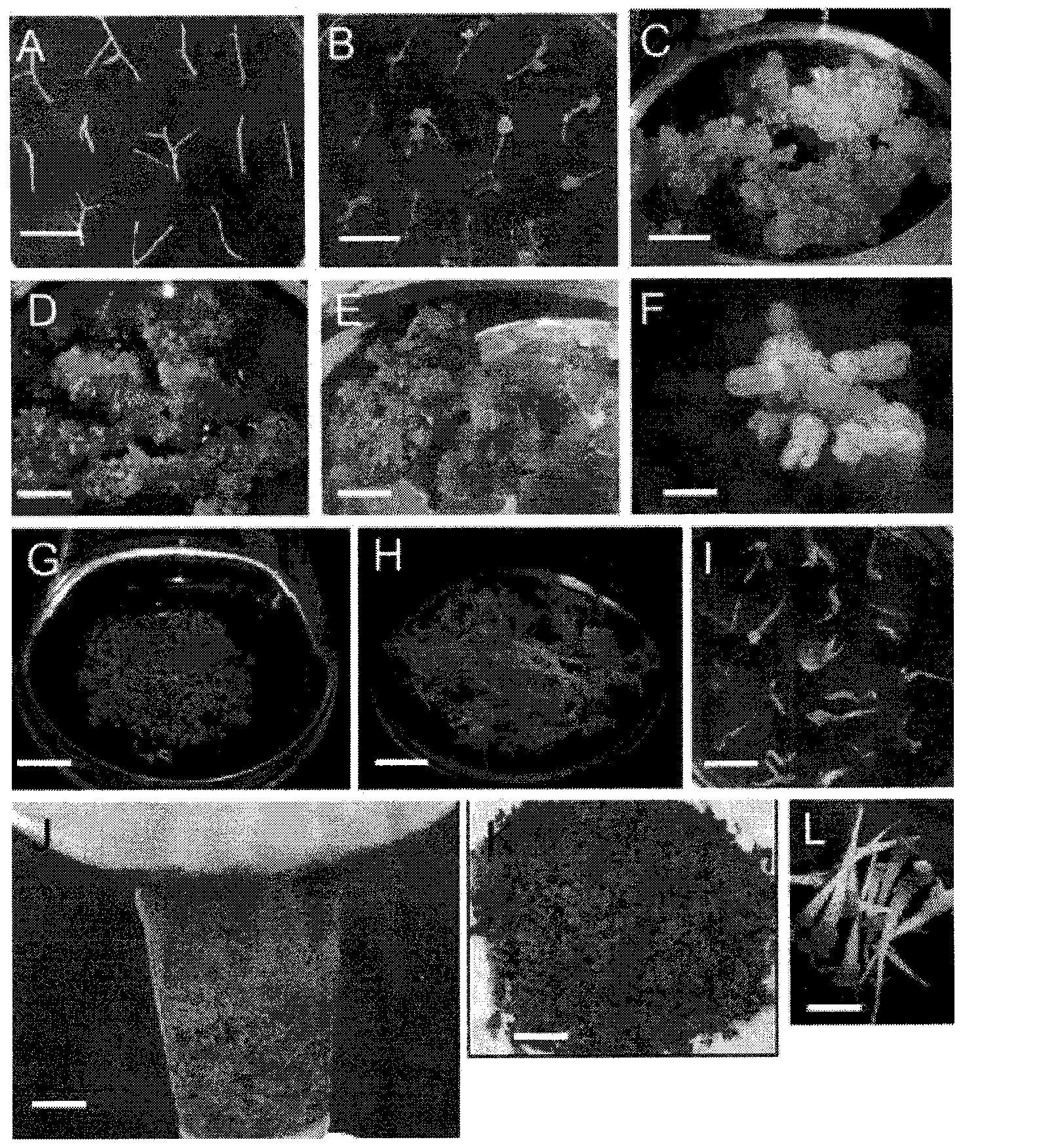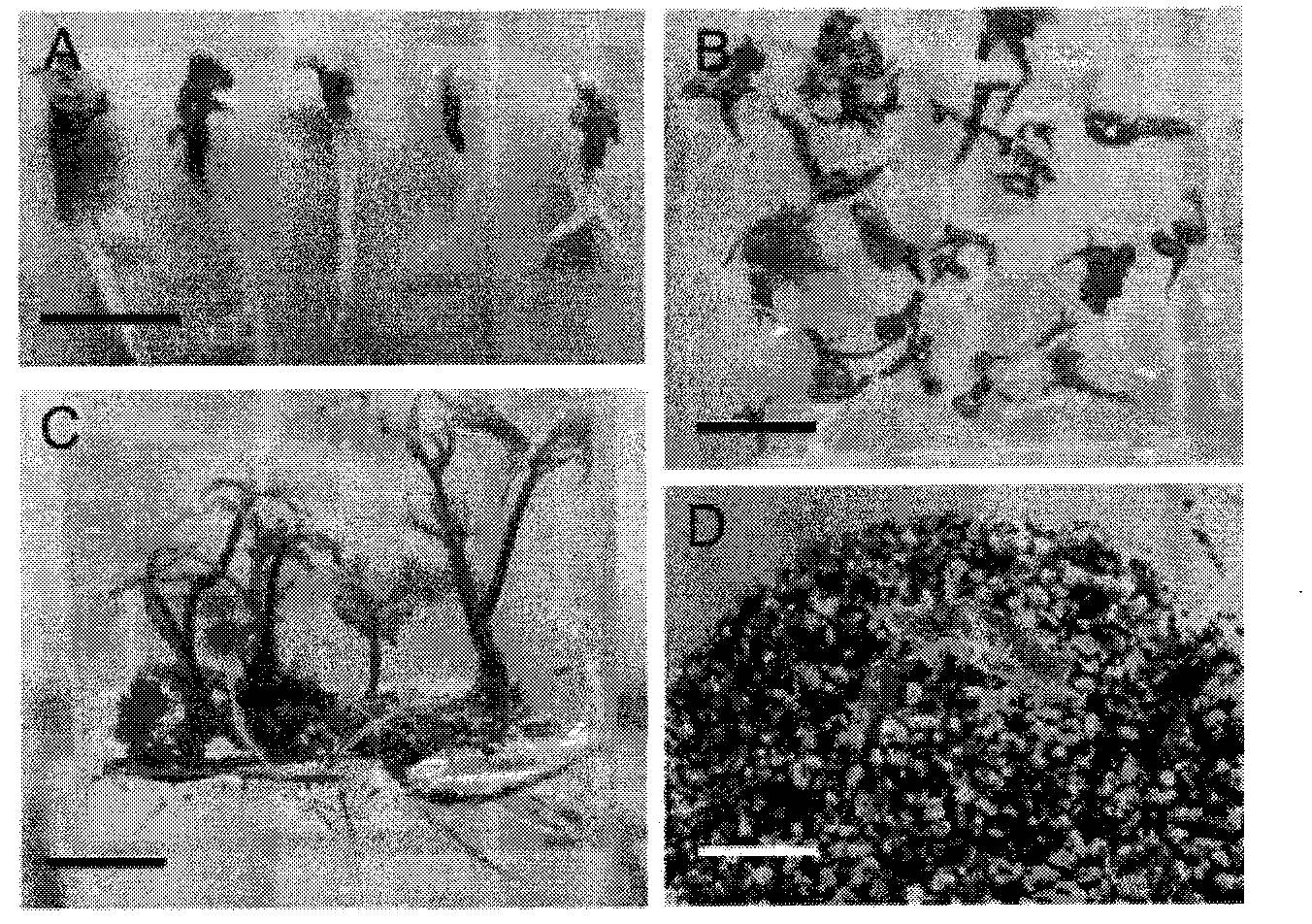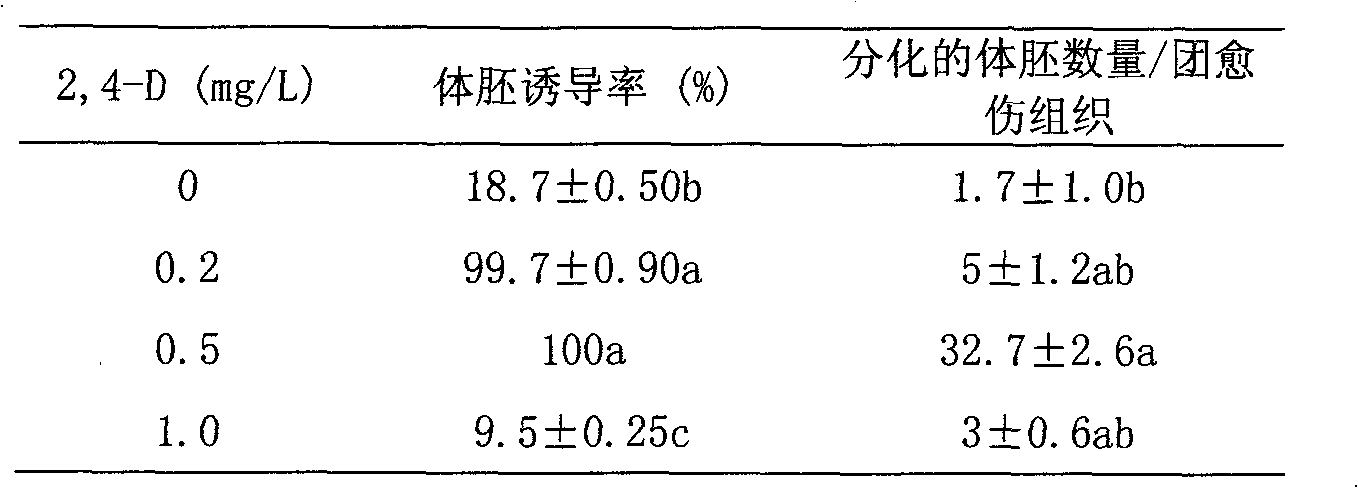Rapid propagation of notoginseng regenerated plant by using bioreactor to cultivate notoginseng somatic embryos
A bioreactor and plant regeneration technology, applied in the field of agricultural biology, can solve the problems of cultivating somatic embryos of Panax notoginseng that have not been reported, and achieve the effect of saving rooting process and efficient reproduction
- Summary
- Abstract
- Description
- Claims
- Application Information
AI Technical Summary
Problems solved by technology
Method used
Image
Examples
example 1
[0020] Example 1 Inducing Panax notoginseng somatic embryogenesis and development
[0021] 1) Induce the embryogenic callus of Panax notoginseng and proliferate
[0022] Firstly, the seeds of Panax notoginseng are germinated, and after the adventitious roots are induced with germinated aseptic seedlings, the adventitious roots are cut into root segments of about 1 cm, and inoculated with 1.0 mg / L 2, 4-D, 30 g / L sucrose and 3.0 G / L gelrite MS solid medium for dark culture. About 50% of adventitious roots induced callus after 5 weeks. Calli are produced from the incisions at both ends of adventitious roots, and are loose and milky white. These calli were subcultured in the same medium every 3 weeks and proliferated rapidly.
[0023] 2) Induction of somatic embryogenesis and development
[0024] The embryogenic callus induced to proliferate was inoculated into differentiation medium containing different concentrations of 2,4-D. After 4 weeks, under the condition of 0.5mg / L2,...
example 2
[0029] Example 2 Efficient cultivation of somatic embryos using small bioreactors
[0030] Transfer the induced and proliferated embryogenic callus to MS solid medium supplemented with 0-1.0mg / L 2,4-D, 30g / L sucrose and 3.0g / L gelrite for dark culture to induce somatic cells Embryogenesis. Inoculate 6-7 embryogenic calli with a diameter of 5.0 mm in each glass triangular flask, and inoculate 7-8 flasks for each treatment. After the spherical embryos are formed, 0.2-0.6g (approximately 300-1000) spherical embryos are inoculated into a triangular flask (100ml) equipped with 30mL of 1 / 2MS liquid medium without 2,4-D and cultivated for 3 weeks, 0.2 g The somatic embryos with the initial inoculation amount grew and developed best, and most of them developed to torpedo embryos.
[0031] According to the ratio of the initial inoculation amount to the amount of medium, 10.0g (approximately 1.65×10 4 1) spherical embryos are transferred to a 3L bioreactor for cultivation, reflecting...
example 3
[0035] Example 3 Somatic Embryo Germination and Soil Transplantation
[0036] (1) Germination of somatic embryos
[0037] The cotyledon somatic embryos obtained by the above liquid or solid culture are transferred to 1 / 2MS solid medium without any plant growth regulator and cultured for 2 weeks, and adult cell embryos will germinate, but their tops are difficult to elongate. We used a range of concentrations of GA 3 Treatment of cotyledon somatic embryos. Select normal cotyledon somatic embryos of about 2.0cm, and use GA of 0-4.0mg / L 3 After processing for 2 weeks, statistical results showed (Table 3), GA 3 The concentration significantly affected the growth of somatic embryo seedlings, 2.0mg / L GA 3 The growth promotion effect on somatic embryonic seedlings is the best, and the top growth and root growth are the best.
[0038] Table 3 Different concentrations of GA 3 Effects on somatic embryo germination
[0039]
[0040] Note: Duncan's multiple comparisons were used...
PUM
 Login to View More
Login to View More Abstract
Description
Claims
Application Information
 Login to View More
Login to View More - R&D
- Intellectual Property
- Life Sciences
- Materials
- Tech Scout
- Unparalleled Data Quality
- Higher Quality Content
- 60% Fewer Hallucinations
Browse by: Latest US Patents, China's latest patents, Technical Efficacy Thesaurus, Application Domain, Technology Topic, Popular Technical Reports.
© 2025 PatSnap. All rights reserved.Legal|Privacy policy|Modern Slavery Act Transparency Statement|Sitemap|About US| Contact US: help@patsnap.com



